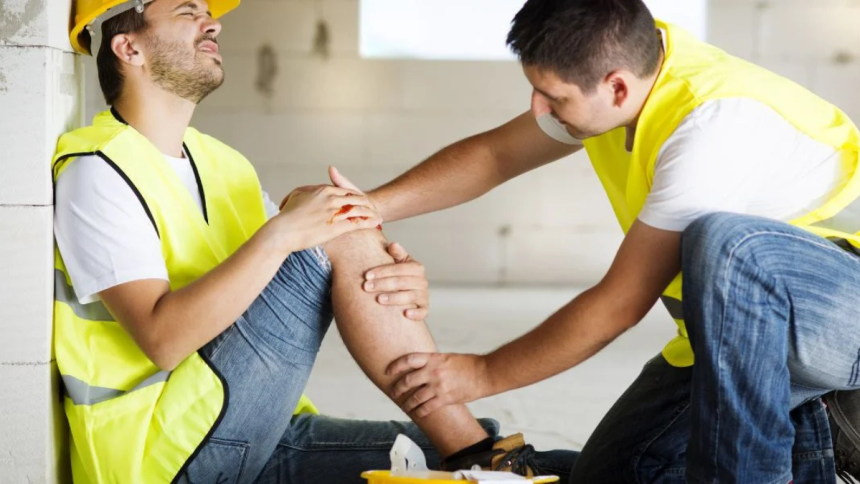Construction sites are some of the most hazardous work environments in California. Workers are exposed to heavy machinery, heights, electrical systems, and fast-paced activity every day. These conditions can cause injuries from minor cuts to serious ones that can change a person’s life. Falls, equipment mishaps, and falling objects are among the top causes. Many workers also suffer from strains and repetitive motion injuries due to the physical demands of the job. These accidents can cause serious financial problems and emotional strain, especially when healing takes months or years. Understanding the most frequent construction accident injuries can help workers and employers take better safety measures. By being aware of the risks, job sites can reduce incidents and protect the people who keep projects moving. Taking safety seriously is the best way to prevent these common injuries from occurring. Construction accidents in California affect both new and experienced workers alike. Even with training and safety rules, the quick pace of these sites makes it hard to avoid hazards. When accidents happen, they often require medical treatment, time off work, and in some cases, long-term rehabilitation. Employers need to keep the workplace safe, and workers need to ensure their own safety on the job. Preventing injuries starts with identifying the most common risks on site. These risks can change with the type of construction project, but some are common across the industry.
Falls from Heights
Falls remain one of the leading causes of injury for construction workers in California. Working on scaffolding, ladders, and rooftops creates constant exposure to height-related dangers. Even a short fall can cause broken bones, head injuries, or spinal damage. Proper fall protection equipment and training are essential in reducing these incidents. Unfortunately, not all sites enforce these safety measures consistently. Missing guardrails, unstable ladders, and uneven surfaces can increase the risk. Fixing these hazards quickly can save lives and prevent serious injuries.
Injuries from Heavy Machinery
Bulldozers, cranes, and forklifts are powerful tools but also present major risks. Workers can suffer crushing injuries, amputations, or fractures if machinery is not used correctly. Poor training, mechanical failures, or lack of supervision often contribute to these accidents. Routine inspections and clear safety procedures can help prevent them. Wearing the right protective gear, such as helmets and steel-toe boots, can also reduce the severity of injuries. Heavy machinery should only be operated by trained and certified personnel. Enforcing strict safety standards around these tools can make a big difference.
Strains and Overexertion
The physical demands of construction work can take a toll on the body over time. Lifting heavy materials, bending, and repetitive motions can cause strains, sprains, and chronic pain. These injuries may not be as sudden as falls or machinery accidents but can still limit a worker’s ability to do their job. Proper lifting techniques and regular breaks can help reduce the strain. Employers can also rotate tasks to avoid repetitive stress on the same muscles. Addressing overexertion early can prevent more serious long-term issues. Many workers continue to work through pain, which can make injuries worse.
Electrocution Risks
Electrical systems are a common part of construction work, and contact with live wires can lead to severe injuries or death. Electric shocks can cause burns, nerve damage, and cardiac issues. Accidents often occur when power lines are not deactivated or marked properly. Wearing insulated gloves and using the right tools can help keep workers safe from electrical hazards. Training workers to recognize electrical hazards is critical for safety. These risks are present in both small renovations and large-scale projects.
Injuries from Falling Objects
Tools, materials, and debris can fall from heights and strike workers below. Head injuries are common and can be as mild as a concussion or as severe as brain trauma. Hard hats are an important line of defense, but preventing falls in the first place is best. Securing tools and materials, as well as maintaining clean work areas, can greatly reduce these incidents. Falling object injuries often occur in busy areas where multiple teams are working at once. Clear communication between crews can help prevent these accidents.
Construction workers in California face daily risks from falls, heavy equipment, repetitive strain, electrical hazards, and falling objects. These injuries can mean months of recovery, money troubles, and ongoing health issues. Preventing them requires a combination of proper training, safety equipment, and strong enforcement of safety rules. Workers and employers share the responsibility for creating a safe job site. Understanding the most common injury risks helps everyone stay alert and prepared. By addressing hazards early and consistently, the number of accidents can be reduced. Safer worksites benefit not only the workers but also the success of the projects they help build.
Lynn Martelli is an editor at Readability. She received her MFA in Creative Writing from Antioch University and has worked as an editor for over 10 years. Lynn has edited a wide variety of books, including fiction, non-fiction, memoirs, and more. In her free time, Lynn enjoys reading, writing, and spending time with her family and friends.















